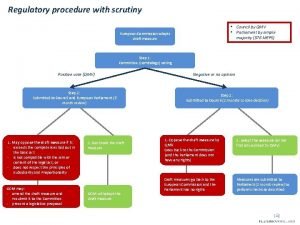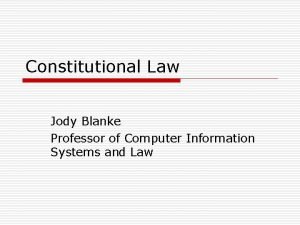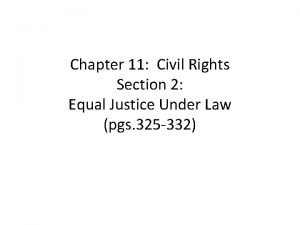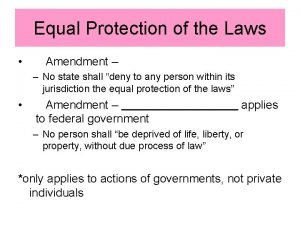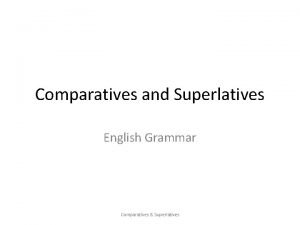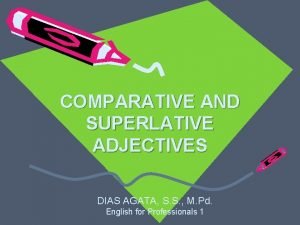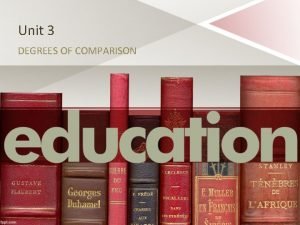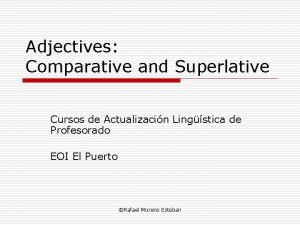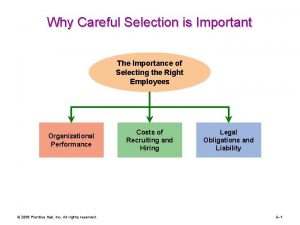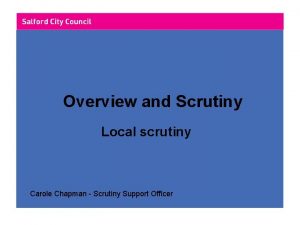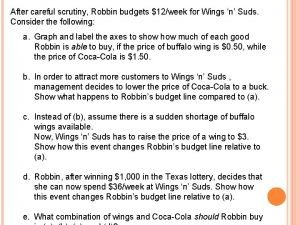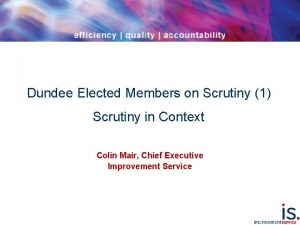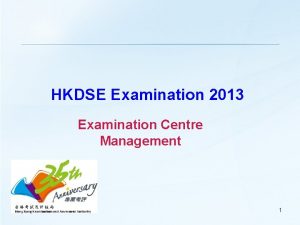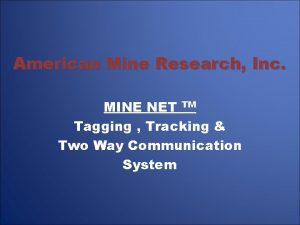Mine Examination Mine examination Careful scrutiny of a

































- Slides: 33

Mine Examination

Mine examination • Careful scrutiny of a mineral property in order to form an opinion or judgement – of its present worth – or future possibilities • A mine is any artificial excavation made for the purpose of winning mineral values. This includes – Open-pit and underground metal, coal workings, quarries, oil and gas, salt mines… – Excludes all digging made for commercial purposes

Purpose of Mine Examination • • When change of ownership is considered Appraisal for tax purposes When funds are acquired through sale of stock When planning broad revision of operating methods or installation of important long-life equipment

Types and scope of mine examination • Preliminary examination – Rapid survey of a property covering more essential features (some sampling, brief geological survey, some mapping, a rough cost setup and an estimation of management) • Formal examination – Detailed survey of a property – Lengthy process (Usually takes 1 -6 - months)

Qualifications of an examining engineer • Sound reasoning abilities (properly weigh component parts, is logical) • Honesty • Working knowledge of geologic principles and ability to apply on local conditions • An understanding of sampling theory and practice • Knowledge of mining methods and there effect on production cost • Working knowledge of mineral dressing • Ability to compute production costs and estimate profits • Knowledge of economic principles and business conditions and their effect on mining industry • An understanding of money values

Professional ethics “Every precaution should be taken to avoid the influence of question of compensation upon the engineers judgment and opinion. ” • Examining engineer must be unbiased in his opinion • Should not have personal or monetary interest in the property he is inspecting • Must ascertain the true purpose of the examination

Economics the management of scarce resources on the earth for social development of human being.

Planning of field work • Field work involved in a mine varies widely, depending upon – The type of property under examination – The familiarity of the engineer with the mine – The purpose of examination

Examining a Prospect • Prospect “What chance has it to become a mine” – Work is carried out along the following lines: • • • Geology, Drilling records, Sampling of outcrops and pits, Estimate of plant cost, transportation, Market conditions and future possibilities

Examining Old working • Old workings: – Faulting was not understood, primitive mining techniques used with cheap labour, mining below water table was not possible • Make the map of the property and place the geology on it • Working can be sampled to determine whether profits can be made from modern methods

Examining an operative property • Estimate the past and present management • Study of office data, maps, drill records, sample maps, cost sheets, productive history • Underground geologic study • Check sampling at vital points • Study of methods to find weaknesses • Survey of plant, equipment • Estimate of future costs, life and expected profits • Computation of value

Purpose and scope of examination • The purpose and scope of examination will decide the extent of examination. – Geography: mine maps, town map, transportation, freight and weather – History • Legal: Changes of ownership, tax history, leases, royalties, suits • Productive: Production record since beginning, shutdowns, comparison • Financial: Capitalization, profits, yearly statements, present standing – Management: Personnel & Organization, Comparison, efficiency

Geographical location • More important for undeveloped mines – Railway facilities: freight costs being most important – Powerlines – Town sites – Nearness to market

Legal history • Inspection of the legal history of the property should cover – all land mineral titles and deeds – All transfers of title – All recorded documents to show acreage and rights are included in property – Disclose errors, conflicts in title – Rentals, leases, royalty/sale contracts and any long-time agreements

Productive record • The productive history of the mine gives a record of the past achievements to base estimates of future capabilities • Particular attention should be paid to determine causes and effects of shutdown • Correctness of accounting practice: – distinction between capital and operating costs – When Expense items are improperly charged to capital accounts, depreciation is not accounted, loss turned into profit

Financial structure • Itemization of financial structure and cost summaries for the past years: – Confirms the examiners judgement – Gives a general picture of financial standing of the business and attitude of the shareholders or owners – Summary of yearly profits furnishes rough gauge of the past success

Management • Management is the influence that coordinates land, capital and labor. • Mangement responsibilities – Direct: managing salaries and wages – Indirect: planning the work • Management is the most important factor (90%) in the success of a business • Costs obtained at a mine are largely dependent on management • Good management looses small amount of money on poor property, small profit on a fair property and will make a bonanza out of a good one

Criterion of assessing management • An examiner builds from his experience has laid out criterion upon which a mangement can be assessed – Safety conditions in a mine is used as a barometers – Good housekeeping at a mine may indicate efficient direction – Conditions of cars used for hauling ore – Are the records, maps and estimates such that a clear presentation is made of the whole situation – Does the management plan the work or merely measure it afterwards – The ratio between the amount paid and results obtained is worthy of notice

Purpose and scope of examination Contd. – – Geology: District maps, surface, underground Sampling: study of all records, correlation with geology Estimate of ore reserve Methods and costs • Mining: method in use, recovery, advisable improvements, estimate most economical rate of mining and corresponding life • Milling: Flow sheet and details of all unusual features, percent of recovery, water supply; space available for tailings

Purpose and scope of examination Contd. – Marketing: sale of ore or metal, smelter contracts, by products possibilities – Valuation: Values for years, life, profit, interest rates, present and future worth – Plant and equipment: • Underground: Condition of Shafts, Plats, drifts, crosscuts raises; pumps • Surface: head frame, hoist, power plant, shops, mills; conditions of machinery – Miscellaneous: Timber , land , power; labour, , wages, disputes; local govt; liabilities – Economic situation: Avge profits, future prospects, future earning power

Assignment No: 2 Gold and Silver as monetary metals Due: 23 -02 -2010 OR Assignment No: 2 Causes of recent (2005 -20010) changes in prices of Copper and Gold Due: 23 -02 -2010

Mineral Financing

Fundamentals of project financing Project financing: • Financing of a particular economic unit in which a lender is satisfied to look initially – to the cash flows and earnings of that economic unit (as the source of funds from which a loan will be repaid) – and to the assets of the economic unit as collateral (property or valuable that you promise to give if you cannot pay back money that one borrows) for the loan. • Lenders initially look to the cash flow from the project being financed rather than the corporation or corporations seeking funding.

Fundamentals of project financing • The ultimate goal in project financing is – To arrange a borrowing for a project which will benefit the sponsor and at the same in no way affecting its credit standing or balance sheet. • Project financing has great appeal when it does not have a substantial impact on the balance sheet or the creditworthiness of the sponsoring entity.

Fundamentals of project financing • The moving party in a project is its promoter or sponsor. A project may have one or several sponsors. • The motivation of construction companies acting as sponsors is to profit in some way from the construction or operation of the project. • The motivation of operating companies for sponsoring a project may be simply to make a profit from selling the product produced by the project. • In many instances the motivation for the project is to provide processing or distribution of a basic product of the sponsor or to ensure a source of supply vital to the sponsor’s business.

Borrowers vs Lenders Borrowers: • prefer their projects to be financed independently – off-balance sheet with appropriate disclosures in financial reports indicating the exposure of the borrower to a project financing. Lenders: • on the other hand, are not in the venture (a business project especially one that involves taking risks) capital business. • are not equity (value of a property after all charges/debts have been paid) risk takers. • want to feel secure that they are going to be repaid either by the project, the sponsor, or an interested third party.

successful project financing • The key to a successful project financing is structuring the financing of a project with as little recourse (use of others help in difficulty) as possible to the sponsor • while at the same time providing sufficient credit support through guarantees or undertakings of a sponsor or third party, so that lenders will be satisfied with the credit risk. • If correct financial planning was done, revenues from the sale of the product produced or service performed should be – – sufficient to service debt interest and principal pay operating costs and provide a return to sponsors and investor

successful project financing (contd) • a satisfactory feasibility study and financial plan should be prepared with realistic assumptions regarding future inflation • rates and interest rates; • the cost of product or raw materials to be used by the project is assured; • a supply of energy at reasonable cost has been assured; • A market exists for the product, commodity, or service to be produced; • transportation is available at a reasonable cost to move the product to the market; • Adequate communications are available; • building materials are available at the costs contemplated; • the contractor is experienced and reliable; the operator is experienced and reliable; • management personnel are experienced and reliable;

successful project financing (contd) • untested technology is not involved; • the contractual agreement among joint venture partners, if any, is satisfactory; • the key sponsors have made an adequate equity contribution; • satisfactory appraisals of resources and assets have been obtained; adequate insurance coverage is contemplated; • the risk of cost overruns has been addressed; • the risk of delay has been considered; • the project will have an adequate return for the equity investor; • environmental risks are manageable.

Project financing (contd) • When the project involves a sovereign (free to govern itself) entity, the following critical elements are important to consider ensuring the success of a project: – a stable and friendly political environment exists; – – – – licenses and permits are available; contracts can be enforced; Legal remedies exist; there is no risk of expropriation; country risk is satisfactory; sovereign risk is satisfactory; currency and foreign exchange risks have been addressed; protection from criminal activities such as kidnapping and extortion; existence of a commercial legal system protecting property and contractual rights.

Risks in Project financing • • • common causes for project failures, which include the following: Delay in completion, with consequential increase in the interest expense on construction financing and delay in the contemplated revenue flow; Capital cost overrun; Technical failure; Financial failure of the contractor; Uninsured casualty losses; Increased price or shortages of raw material; Technical obsolescence of the plant or equipment; Loss of competitive position in the marketplace; Poor management; Overly optimistic appraisals of the value of pledged security, such as oil and gas reserves. In addition, for projects in a foreign country, the following are causes for project failures: government interference; expropriation and financial insolvency of the host government. For a project financing to be successfully achieved, these risks must be properly considered, monitored, and avoided throughout the life of the project.

Risks in Project financing • • • When investors consider financing a mining project, they analyze the current state of the industry (supply, demand price factors), the company (cost profile, operating efficiency, technology, labour factors, access to raw materials, reserve replacement strategy, contingency and emergency planning, safety and environmental record, management) and the country where the project will be located (political risk). All these aspects are important as mining projects can experience various difficulties. For example, the US$900 million Gamsberg zinc project in South Africa is on hold due to poor market conditions. 7 The Windy Craggy copper zinc project in Canada was permanently halted in 1993 due to environmental concerns and transboundary pressures. 8

Mineral Financing • The global mining industry is dominated by some 10 large companies whose total market • capitalization is US$92 billion. • Mining itself has a huge impact on surrounding communities, – leaves a large environmental footprint and is controversial largely because of issues
 Alliteration in porphyria's lover
Alliteration in porphyria's lover Regulatory procedure with scrutiny
Regulatory procedure with scrutiny Strict scrutiny test
Strict scrutiny test Media scrutiny definition
Media scrutiny definition Strict scrutiny test
Strict scrutiny test Facts about richard lovelace
Facts about richard lovelace Intermediate scrutiny
Intermediate scrutiny Intermediate scrutiny
Intermediate scrutiny The monkey's paw be careful what you wish for
The monkey's paw be careful what you wish for Be careful little mouth what you say
Be careful little mouth what you say Comparatives explanation
Comparatives explanation Take heed lest you fall
Take heed lest you fall Be careful it's a jungle out there
Be careful it's a jungle out there Ten cuidado con tus pensamientos
Ten cuidado con tus pensamientos Boring comparative
Boring comparative Bible verse lest you fall
Bible verse lest you fall Careful make sentence
Careful make sentence Paragraph on nature
Paragraph on nature Degree of comparison of evil
Degree of comparison of evil Using the body in an efficient and careful way is
Using the body in an efficient and careful way is Avverbi definizione
Avverbi definizione What should be given attention in this style
What should be given attention in this style Be careful punctuation
Be careful punctuation Comparative form of peaceful
Comparative form of peaceful Safety is simple as abc
Safety is simple as abc Talent comparative and superlative
Talent comparative and superlative Themes about being careful
Themes about being careful Can could must
Can could must Why careful selection is important
Why careful selection is important Careful protection and preservation of environment
Careful protection and preservation of environment Oh be careful little mouth what you say
Oh be careful little mouth what you say Making careful notes is essential for:
Making careful notes is essential for: Be careful then
Be careful then Adverbs of probability
Adverbs of probability

